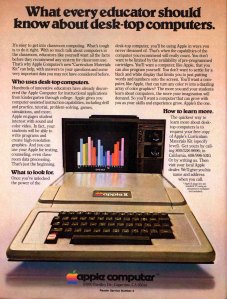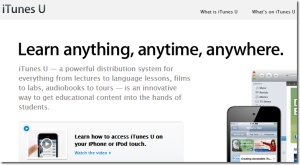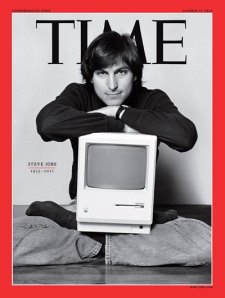Although educational technology is not limited to electronic computers, hardware, and software, these tools have had and will continue to significantly impact education. Pressy’s teaching machines in the 1920s through Skinner’s more advanced learning machines in the late 1950’s illustrate the evolution of educational technologies. These innovations, however, never made permanent inroads into the classroom.
.
The educational computer age more effectively began in the early 1980’s with the introduction of the Apple ][ into K-12 classrooms. Started in 1976 by Steve Jobs and Steve Wozniak and officially incorporated in 1977, Apple Computer Inc. has become one of the key players in modern educational technology. To help establish itself in the educational market, Apple established its Apple Education Foundation, and through its Kids Can’t Wait program donated thousands of computers to California schools (Apple Computer Inc. – Early History, 2011). For an entire generation of students, many first experienced computers using an Apple.
And then came the Mac. While not the first computer to have a GUI interface, the Mac was the first to bring it mainstream. (Apple’s Lisa was first, using ideas from Xerox, but Lisa’s high cost kept it largely out of the consumers’ hands). Macs also introduced the world to the mouse. The Macintosh, despite some early hits and misses, eventually has risen to become a dominant player in personal computing, even if market share would not always suggest it’s prominance. (Steve Jobs was involved in the transition from Lisa to Mac, but spent much of the early Mac years outside the Apple company, which he left in 1985. Jobs returned to Apple in 1997.)
Apple continued to target the educational community with the following Mac commercial –
.
In an 2005 interview with Business Week, Steve Job channel’s Moody’s (1999) sentiments regarding the value of giving students the power to create their own video media. Some Q and A’s from that interview:
Q: What difference would greater access to technology make?
A: Obviously, the computer has changed from a device of computation into a device for communication in the last few years. Now, its primary purpose is to be a tool and center for communication, whether it is distant communication over the Net or communication with other kids in your class by bringing in a video report
made with iMovie [Apple’s desktop video-editing software]. Our vision is that we have just begun. This is the tip of the iceberg of what we can do with these tools.Q: What’s an example of how things are changing?
A: Take desktop movies, which allow kids [as young] as second grade to make their own movies with a digital camcorder and an iMac, and communicate not just ideas but emotions. I’ve made movies on our iMac, and it’s the most emotional thing I’ve ever done. You communicate in very subtle and, in some cases, very profound ways through what is one of the greatest mediums of our time.There is no question this is going to become huge in the schools. Whether it is good or bad — and I don’t think it is good, myself — a lot of [kids] don’t read that much anymore. The way they interact with their culture is with visual imagery accompanied by music and sound. So to be able to create that is a very important thing. It is like writing vs. reading. We all know how to read. But very few of us know how to “write” in this medium. And what Apple is doing is giving these kids a chance to become authors in that medium and not just customers. And I think that is very important in developing their imagination, their creativity, and their ability to communicate.
Jobs was very concerned about hardware design, not just function. Does this echo Marshall McLuhan’s “The Medium is the Message? It is the technology, not the content, that is the critical thing? How important has the “coolness” factor of Apple products been at enticing people towards technology? Apple’s iconic 1984 Mac commercial perhaps led the transformation of an Apple Culture into a Mac Cult.
.
Other notable educational milestones have included iTune U which, in 2007, began offering offering free educational content online.
The introduction of Macbooks, iPods, iTouches, and now iPads into classrooms has sealed a place for Steve Jobs and Apple in the history – and the future – of educational technology.
.
Love ’em, hate ’em or any view in between, it’s impossible to deny Apple’s significant role in our educational culture.
Some other links & videos you may enjoy ~
- Apple’s greatest successes and failures
- Apple in Education – Apple’s company education site
- Biography of Steve Jobs video (9:46)
- A nostaligic look at Apple computers & products video (7:14)


